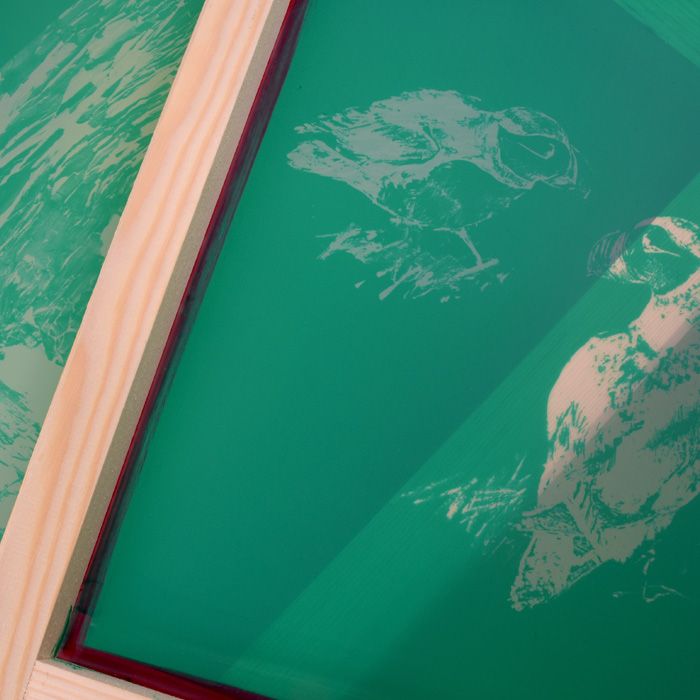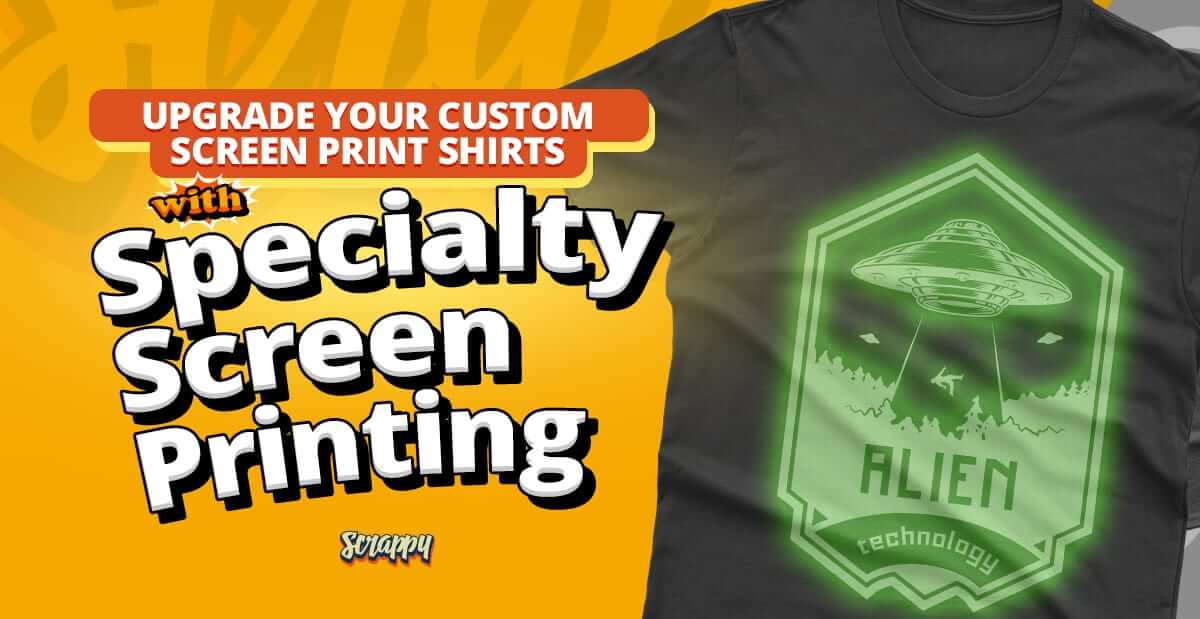Silk Screen Printing for Bold and Lasting Designs
Silk Screen Printing for Bold and Lasting Designs
Blog Article
Display Printing Uncovered: Every Little Thing You Required to Learn About T-Shirt and Garment Printing Techniques
If you've ever before questioned exactly how those lively designs wind up on your preferred tee shirts, you remain in the best location. Screen printing is an interesting technique that incorporates art with technique, supplying endless opportunities for creativity. Understanding the principles, from devices to ink options, can significantly affect your outcomes. Ready to explore the essential components that make display publishing an art type? Let's discover the information that can elevate your jobs.
The Essentials of Screen Printing: How It Functions
When you plunge right into display printing, you'll discover it's both an art and a scientific research. At its core, screen printing entails creating a pattern, or display, that allows ink to pass via just in specific areas.
Next, you'll mix your inks and prepare your printing surface. Placement the display over the textile, then make use of a squeegee to press ink with the display onto the garment. This process needs accuracy, as you want clear, vibrant prints. After printing, you'll cure the ink with heat, ensuring it adheres to the material and lasts through washes. Each action is essential, and understanding them will certainly raise your screen printing abilities, transforming straightforward garments into unique, expressive items.
Kinds Of Display Printing Methods
As soon as you realize the essentials of screen printing, it's time to explore the numerous strategies that can boost your designs. One preferred technique is standard display printing, where ink is pushed through a stenciled display.
An additional option is plastisol printing, understood for its resilience and brilliant colors, making it a preferred for several brand names. Experiment with halftone printing to produce gradient effects and elaborate layouts.
Essential Equipment for Display Printing
To accomplish spectacular results in display printing, having the right tools is basic. First, you'll need a durable display printing frame, which holds the mesh that transfers your layout onto the garment. Next, spend in high-grade mops; these are crucial for applying ink equally throughout the display. You'll likewise call for a great exposure system to develop your screens, as well as a washout cubicle for cleaning them after use. A trusted warm resource, like a conveyor dryer or warm press, is vital for healing your prints to ensure durability. Don't neglect an appropriate work area, geared up with tables and storage space for your materials. Safety gear, such as handwear covers and masks, will certainly keep you risk-free from chemicals and inks. With the right tools, you'll be well on your means to generating professional-quality prints.
Selecting the Right Inks and Products
When selecting inks and materials for display printing, you require to think about the kind of ink that functions best for your job. Assume about material compatibility to guarantee your styles look last and fantastic long. Discover environment-friendly ink choices to make your printing procedure extra lasting.
Kinds Of Screen Inks
Selecting the appropriate display ink is vital for attaining vibrant, durable prints that satisfy your task's demands. There are numerous kinds of screen inks to check out. Specialized inks, such as glow-in-the-dark or metal, can add one-of-a-kind impacts to your layouts.

Textile Compatibility Considerations
Comprehending fabric compatibility is essential for attaining top notch display prints, particularly considering that different materials react distinctively to various inks. When choosing inks, take into consideration the material type-- cotton, polyester, or blends. For cotton, water-based inks function well, providing soft qualities and breathability. Polyester, on the various other hand, typically requires plastisol inks for far better attachment and vibrant colors. You may need to use a mix of both types if you're publishing on blends. Always examine your inks on sample fabric to guarantee they adhere correctly and keep color honesty. Additionally, remember that textile weight and appearance can impact the final outcome, so selecting the appropriate ink and product combination is essential for your job's success.
Eco-Friendly Ink Options
Environmentally friendly inks are becoming a prominent option for screen printers that desire to minimize their ecological effect while keeping quality. When selecting inks, think about water-based inks, which are less harmful and much easier to clean up compared to standard solvents.
Additionally, look for inks made from renewable energies, such as soy or vegetable-based choices. By picking the appropriate inks and materials, you'll not only produce spectacular styles however additionally add to an extra lasting printing process. Make the switch, and your prints will certainly show your dedication to the atmosphere!
Preparing Your Style for Screen Printing

Submit Layout Requirements
To assure your design looks sharp and vivid on textile, you'll need to pay close interest to file style needs for screen printing. Make sure your style has a transparent background to prevent unwanted white sides on your prints. Maintain shade settings in mind; CMYK is common for screen printing, so transform your RGB creates as necessary.
Shade Separation Methods
Shade splitting up is an silk screen printing essential action in preparing your layout for display printing, and mastering it can greatly enhance your print quality. You'll need to break your design right into individual shades, as each color requires a separate display during printing. Start by identifying all the colors in your style and create layers each. You can use software program like Adobe Photoshop or Illustrator to separate and separate colors efficiently. Be particular to conserve each layer as a different data, normally in a format like TIFF or PSD. This accuracy not only guarantees precise color depiction however additionally enhances the printing process. By taking notice of color splitting up, you'll achieve specialist and lively results in your screen-printed garments.
Resolution and Size
Achieving the most effective cause screen printing begins with assuring your design has the appropriate resolution and size. Preferably, your artwork ought to go to least 300 DPI (dots per inch) for sharp, clear prints. If you utilize reduced resolution, your last product might look less than professional and pixelated.
When it concerns dimension, consider the dimensions of your print location. Style your art work to match the final print size, preferably producing it in the real dimensions you'll be publishing. By doing this, you'll stay clear of any kind of unforeseen scaling issues.
Constantly check your style in both vector and raster styles. Vector graphics can be scaled without losing top quality, making them suitable for display printing. Preparing appropriately will ensure your layout looks impressive on every garment!
Step-by-Step Screen Printing Process
Display printing is a dynamic procedure that allows you to create dynamic designs on numerous surfaces. To begin, you'll require a screen, solution, and your selected ink. Prepare your display by cleansing it completely. Next, use the solution uniformly and let it dry in a dark location. As soon as completely dry, subject your display to light with your design positioned on it, which will solidify the emulsion where the light hits, developing a stencil - screen printing kit.
After rinsing the unexposed emulsion, your display prepares. Establish it up on your printing surface area and align your garment underneath it. Put ink onto the display and make use of a squeegee to press the ink through the pattern onto the material. Lift the screen carefully and let the print completely dry. Cure the ink utilizing warmth to assure resilience. That's it! You have actually efficiently display published your style.
Tips for Effective Screen Printing Projects
While you're diving right into your display printing projects, bear in mind that prep work is vital to success. Begin by gathering all your materials-- inks, displays, mops, and garments. A tidy work space assists protect against undesirable errors, so clean up before you begin.
Next, validate your artwork is high-resolution and appropriately sized for your garment. Check your screen for correct exposure and tidy it thoroughly to avoid spots. When mixing your inks, follow the maker's guidelines to attain the ideal consistency.
During printing, apply even pressure with your squeegee for consistent outcomes. Do not rush; take your time to validate each print meets your requirements. After printing, allow your garments dry entirely prior to managing or packaging them.
Last but not least, always keep a sample of your help future referral. In this manner, you can analyze your progression and boost your techniques in time. Delighted printing!

Frequently Asked Inquiries
How much time Does It Take to Establish up a Display Printing Work?
Establishing a display printing job normally takes around thirty minutes to an hour. You'll prepare the screens, mix inks, and change journalism. The time differs based upon complexity and experience, so remain arranged!
Can I Print on Different Textile Types Making Use Of the Very Same Technique?
Yes, you can publish on different material kinds using the very same method, yet you'll need to change your inks and settings. Some textiles absorb ink in a different way, so trying out assurances the finest results for each product.
What Are Typical Blunders to Stay Clear Of in Screen Printing?
When screen printing, avoid typical blunders like using the wrong ink, ignoring appropriate exposure times, or avoiding pre-press checks. Constantly test your setup and preserve clean displays to assure high quality outcomes each time.
How Can I Properly Clean and Maintain My Display Printing Tools?
To correctly clean and maintain your display printing equipment, you ought to routinely clean screens with proper solvents, examine squeegees for wear, and guarantee all devices are kept dust-free and completely dry. Uniformity improves and avoids expensive repair services performance.
Is Display Printing Eco-friendly Contrasted to Other Methods?
Display printing can be a lot more eco-friendly than other techniques, specifically if you make use of water-based inks and eco-conscious products. By choosing sustainable products and methods, you decrease waste and reduce your influence on the world.
Display Printing Uncovered: Everything You Required to Know Concerning T-Shirt and Garment Printing Techniques
At its core, screen printing includes developing a pattern, or screen, that enables ink to pass through just in particular areas. Setting the display over the fabric, after that utilize a squeegee to push ink with the screen onto the garment. One preferred technique is standard display printing, where ink is pressed through a stenciled screen.When selecting inks and materials for screen printing, you require to take into account the kind of ink that works ideal for your project.
Report this page